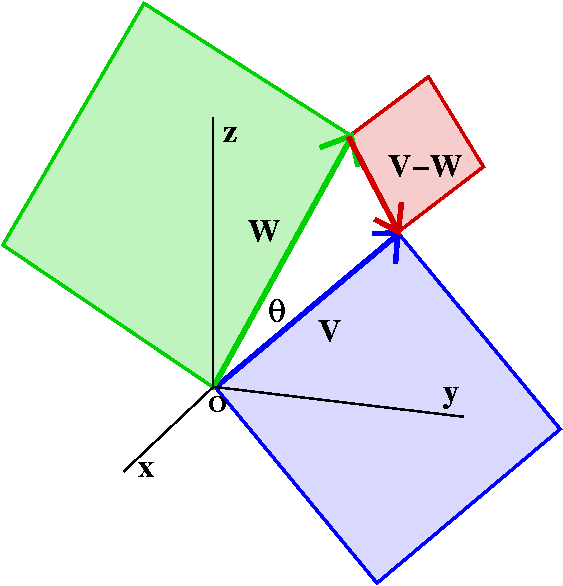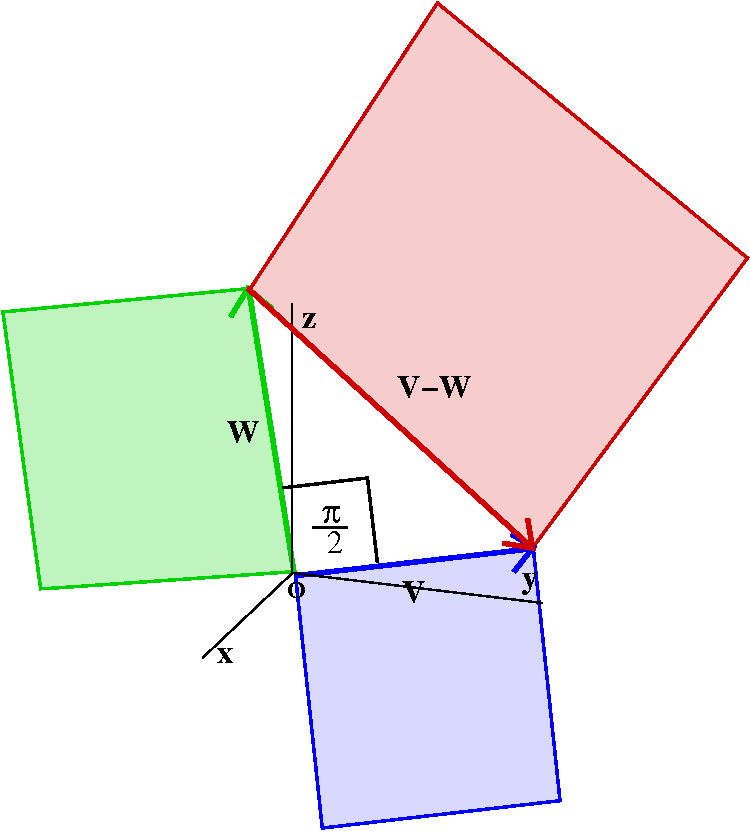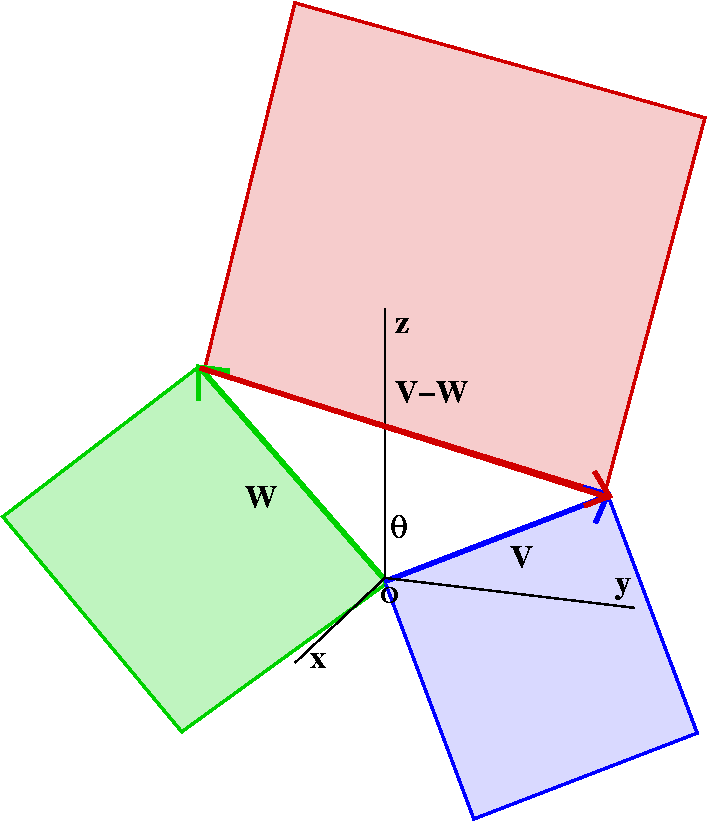


| If theta is relatively small, then the cos(theta) term is (relatively) large positive (close to 1). Therefore (because of the minus sign) the area of the v-w square is much smaller than the sum of the areas of the squares with sides v and w. v·w is positive. |

|
| Here things are exactly right. (Joke: also, maybe a reference to the three bears and Goldilocks.) Theta is a right angle. The area of the square on the hyponteneuse is equal to the sum of the squares of the areas on the other two sides. v·w is 0. |

|
| Here theta is "large" (but less than a straight angle: if it were larger than a straight angle, we'd have a situation duplicating the first picture). And cos(theta) is negative, so that the area of the square opposite the origin is much larger than the sum of the areas of the squares on the other two sides. v·w is negative. |

|
Maintained by greenfie@math.rutgers.edu and last modified 1/22/2006.